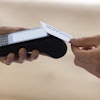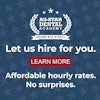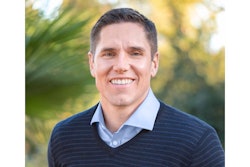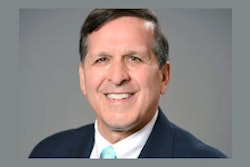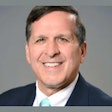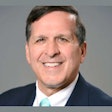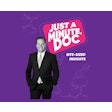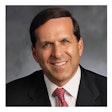One of the biggest challenges owner-dentists face is that they spend most of the operating hours of the practice chairside. In many ways, this is a good thing. It is how dentists generate revenue.
However, it doesn’t leave much time for management. Furthermore, most doctors don’t have any internal resources to help with management or business decision-making. How are they supposed to set expectations for the staff? How and when are practice goals established? How are strategic decisions made for the practice? Are incentive plans established for the staff? Can the practice afford them, and how are they communicated?
 Jim Boltz.
Jim Boltz.
Most businesses have a process for establishing a plan for each year. However, this is less common in dentistry.
There are many benefits to budgeting and planning. That is why most businesses spend the time, energy, and cost to do it. If you want to feel more in control of your practice, have a better understanding of the financial dynamics of your practice and a tool to set expectations, and make better business decisions, then budgeting and planning may be for you.
In this article, we discuss the budgeting process and some of the benefits derived from it.
Understanding the budgeting process
To establish a solid foundation for a budget, you first must understand what drives a practice's costs and revenue. These are called cost and revenue drivers.
For a dental practice, the cost and revenue drivers are patients and hours. Why patients and hours? Each hour that a dental practice is open, costs are being incurred.
If we open the practice for fewer hours, then the overall cost of the practice decreases. If we open the practice for more hours, then practice costs increase. Each hour that we are open is an opportunity to produce dentistry. The more hours we are open, the greater the opportunity to generate revenue.
Patients are also revenue drivers. The more patients we see, the greater the opportunity to generate revenue. For budgeting, we primarily use the hours cost driver and use patient flow as a variable to see if we think we can “fill” the available hours.
This is important, because we can establish a historical trend based on these cost and revenue drivers that gives us a better opportunity to predict future results. For instance, if a doctor historically produces $500 per hour that the practice is open, then it is likely that the doctor will continue to produce close to this amount in the future.
Then we must take into account variables, such as new patient flow and changes to the providers’ schedule. An increase in available hours increases capacity but may reduce productivity per hour. We weigh these factors to determine how to adjust the expected hourly production.
Once we have established productivity expectations (each provider’s production-per-hour expectations), we are able to project what we believe the revenue of the practice will be for the coming year. Then, we add all the specific cost line items to the budget.
A good budget contains all the details of your practice, staffing, marketing, cost of services, facilities, other overhead, doctor compensation, debt service, and taxes. Each of these cost areas is detailed so they can be changed or updated as necessary with changes that take place in your practice.
All employees are listed with their pay rate and hours. Other cost line items are in detail and based on the prior year's trend, with additional information about plans for the coming year.
We have now created a budget that is tailored to your practice based on your historical results and future plans. We used cost and revenue drivers to determine the level of productivity expected. Is it foolproof? No. That is why it is imperative to continually compare actual results to your budget.
So why go through all this effort? What are the benefits?
Setting expectations
Would you know the answer to this question if you were asked: “If you produce $500 per hour and each of your hygienists produces $100 per hour, what would be your expected net after tax cash flow for the year?”
Being able to connect the dots between production per hour or day to your predicted financial results is powerful. You may find that the net cash flow of the practice is such that these targets don’t work, or you may find that it leaves you enough cash flow to reinvest or start incentive plans. It allows you to make better strategic business decisions.
Goal-setting
 Bruce Wickham.
Bruce Wickham.
Now, we can communicate with the staff what we would like our goals to be because we established them on an hourly level. Does your staff input your goals into your dental software based on each provider’s schedule?
Your budget contains the hourly goals for each provider that can be used to communicate and monitor against the plan, and you understand what to expect in cash flow if the goals are reached.
By communicating goals and measuring against them, you can continually work to improve. This is a key ingredient to running a successful dental practice.
Establishing incentive plans
With goals established and expectations set, your staff may be asking, “What’s in it for me?”
You may want to establish an incentive plan. There are many types of incentive plans that could be the topic of another article. Let’s just say that we believe in rewarding performance.
But what’s the right amount of reward? What numbers do they have to hit? Well, thankfully, we have created a budget and can input the cost of the incentive plan into the budget.
Now, we can tell you your net cash flow after the cost of the incentive plan. This way, you can feel good about sharing in the profits of the practice.
Making better business decisions
Owner-dentists are faced with all kinds of business decisions. When’s the right time to add another hygienist? Should I buy a cone beam? Should I expand my hours? Should I bring on an associate? Should I hire an expanded functions dental assistant? How much should I give in raises to my team?
To make educated decisions, it is important to understand the financial impact of these decisions, or at least try to predict the financial impact of these decisions. Any of these potential decisions can be modeled in your budget to anticipate the potential financial impact. This way, you can make a decision with a better understanding of the financial context. It’s your decision, but we want you to be armed with as much information as possible when you make it.
Peace of mind
Ultimately, the most important benefit of budgeting and planning is peace of mind. When you have a full understanding of the financial dynamics of your practice, you can sleep better at night.
You’ll understand what it takes to be successful. You’ll also know that you are being proactive and forward-looking. It’s important to meet with your account or business adviser regularly to review your budget to ensure you are making any necessary adjustments to your plan. You’ll have an idea if there are any pitfalls coming. The “unknown” creates anxiety. The “known” creates understanding and reduces anxiety.
With the limited time and resources that owner dentists have today to spend on managing their practices, budgeting and planning can be a game changer. We believe all dentists would benefit from adding this to their business tool set.
Jim Boltz is the president of Zimmerman Boltz & Company, an accounting firm that specializes in providing accounting, tax, and consulting services to dentists. Zimmerman Boltz & Company has more than 350 dental clients and is a founding member of the Academy of Dental CPAs (ADPCA), a nationwide group of accounting practices that serve dentists. Boltz is a founding member of the ADCPA.
Bruce Wickham is a partner in Zimmerman Boltz & Company and has been with the company since 2010. In addition to serving as the company's chief operating officer, Wickham consults with dentists on the financial aspects of their practices, transitions, tax strategy, practice management, business structure, internal communications, and employee incentive programs.
The comments and observations expressed herein do not necessarily reflect the opinions of DrBicuspid.com, nor should they be construed as an endorsement or admonishment of any particular idea, vendor, or organization.
